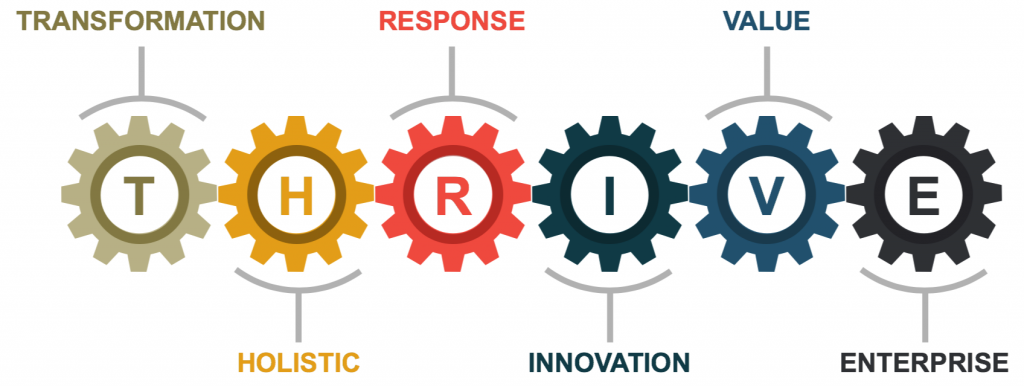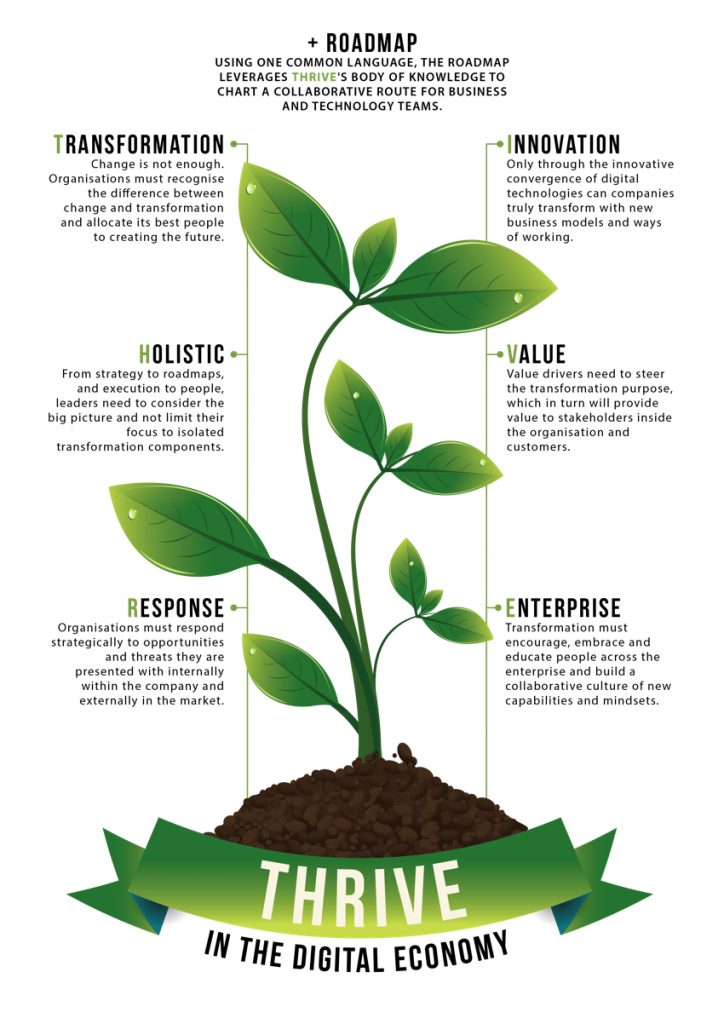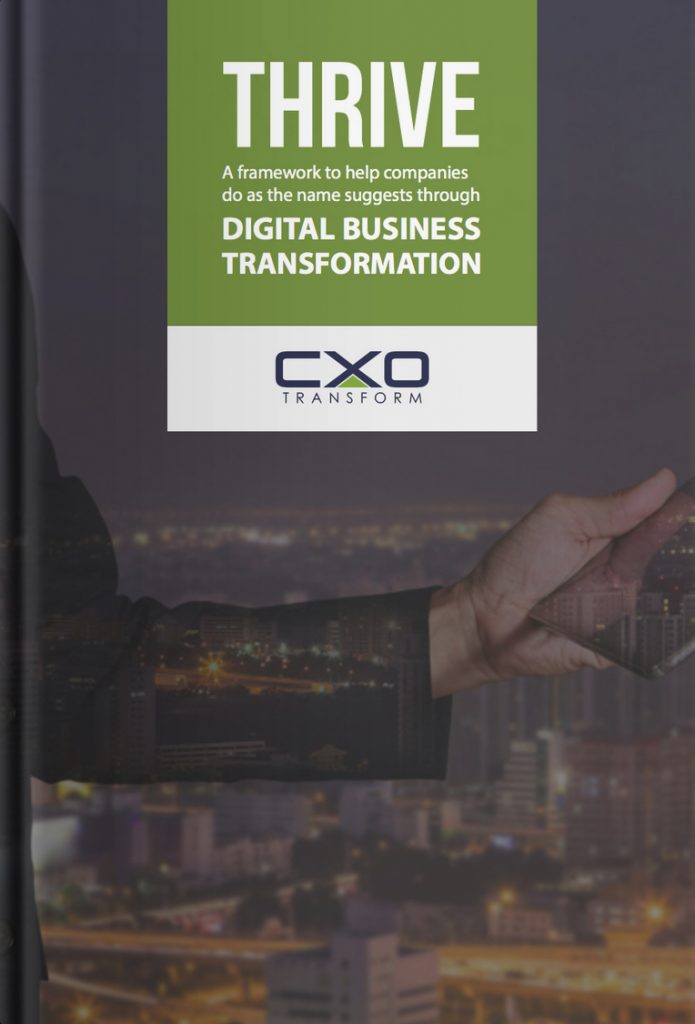A Framework for Digital Transformation
Digital transformation frameworks are what separate successful transformation efforts from the unsuccessful. Because despite increasing talk and attention around the benefits of digital transformation, many companies don't adopt a common business-focused digital transformation framework. IT can be found to be doing things one way, while the business does things another – and organisations suffer severely as a consequence.
Successful organisations operate with a clear vision of where the business is going, what it needs to achieve and how it intends to get there. A Business model, operating model and transformation roadmap are vital for all companies, along with the ability to solve problems, defend against threats and exploit opportunities through the innovative integration of digital technologies. A common digital transformation framework helps them do this.
This post introduces a digital transformation framework that organisations can use to develop a their transformation journey. The framework known as THRIVE, is made up of six digital transformation guiding principles, which every organisation needs to consider, when embarking on transformation.
THRIVE Digital Transformation Framework
We know from Stephen Covey that values govern people’s behaviour, but principles determine consequences. So in the way that Covey encouraged us to utilise key leadership principles, so the THRIVE digital transformation framework is intended to encourage leaders to utilise six digital business transformation principles to equip themselves for the digital economy challenge.

THRIVE is an acronym made from six words which are: Transformation, Holistic, Response, Innovation, Value, and Enterprise. THRIVE is not related to any one technology or industry. It is a way of thinking of, and approaching transformation from a business perspective. It helps leaders approach business transformation from all angles, and not be blinkered by digital marketing hype or specific technologies.
It's a practical digital transformation framework, which provides leaders with a body of knowledge and roadmap to help them independently lead their transformation. It serves as a holistic guide to maturing internal capabilities and mindsets, responding strategically and innovatively to market threats and opportunities, delivering new value to the market and satisfying the expectations of internal stakeholders through successful execution.
THRIVE's digital transformation framework enables transformation leaders to analyse the entire transformation process in the context of their own unique internal environment and position in the market. THRIVE steps help chart a clear transformation roadmap, along which business and technology leaders can collaborate to mature transformation capabilities, culture and objectives, in order that the company can thrive in the digital economy.
From business models influenced by new digital capabilities, through to the successful execution of transformation strategy, THRIVE provides leaders with a practical framework for a shared understanding of their organisation’s need to truly transform and thrive, in what is set to be a dramatic decade ahead.
THRIVE is the outcome of first-hand findings during thousands of hours of interviews and workshops with transformation leaders on four continents. Coupled with surveys and assessments conducted within the confines of individual companies, across international audiences, and data supplied by some of the world’s most trusted researchers, the evolution of THRIVE has been rigorous.
From American Fortune 500 CIOs to British Managing Directors, and some of the most successful organisations across the Middle East and continental Europe, we have interviewed and understood the aspirations, constraints, success factors and complaints that face people and transformation in a diverse range of environments.
THRIVE has considered findings from industries including; Automotive, Education, Financial Services, FMCG, Logistics, Management Consulting, Manufacturing, Non-profit, Renewable Energy, Sport, Technology, Telecommunications, Utilities, and public sector organisations in five countries.
Transformation
The word ‘Transformation' is fundamental to the THRIVE digital transformation framework because leaders first need to recognise the fundamental difference between change and transformation, before they can lead their companies on a journey of legitimate business transformation. While ‘change’ is required to maintain and modernise an organisation, this is not enough to sufficiently elevate both its internal capabilities and external offerings. Too many companies are being lulled into a false sense of transformation security through siloed digital projects and change initiatives that are not strategically transformational.
To take advantage of the opportunities and protect against threats that new digitally enabled business models present, leaders need to commit to being bold and transformational, digitising at two speeds, ahead of those that remain safely within their comfort zones and traditional slow ways of working.
Leaders need to communicate this fundamental difference across their organisations to avoid their best resources being tied up making small changes instead of driving transformation. This is also required to keep the company’s best people on board and attract new talent, because the high-performers have a insatiable desire to be part of an ambitious digital transformation journey. If one company fails to take them on that journey, they will move to another that will. Legitimate transformation also requires a fundamental shift in other aspects of an organisation. Appropriate governance, mindsets, business models, capabilities and culture are just some some of the transformation fundamentals that THRIVE addresses.
Holistic
The word ‘Holistic' is integral to the THRIVE digital transformation framework because unlike business process re-engineering, which focuses on business processes, or app development which focuses on technology, or projects, which focus on producing outputs, digital business transformation requires an integrated and holistic approach.
THRIVE helps leaders take a holistic and integrated perspective of their enterprise and its complexity. It does not reinvent individual management disciplines but it provides a framework that integrates individual disciplines, which should be sufficiently mature to undertake successful transformation. From digital business models, capabilities and roadmap design, through to culture, portfolio governance and transformation execution, leaders need to consider the big picture and not limit their focus to only some of the key enablers of transformation. Most transformation strategies are not successfully executed upon, and only a holistic approach to transformation will produce the outcomes a company aspires to achieve. Through holistic transformation, leaders will dramatically increase the odds of transformation success, and be among the minority that actually achieve their transformation objectives successfully, and live up to stakeholder expectations.
Response
The word ‘Response' remind organisations why and how they need to respond strategically to the opportunities and threats they are presented with – both inside their organisation, and externally in the market.
Internally this could involve responding to the evolutionary needs of the organisation’s culture, maturing the capabilities required to achieve transformation excellence, and the establishment of new governance that facilitates innovative transformation while minimising bureaucracy.
Externally it could involve defensive and offensive responses to the changing dynamics of the market, caused by disruption, or seizing the opportunities that digital technologies and new business models can be used to take advantage of. These and other responses form part of the transformation strategy that needs to be shaped, then planned as part of a short, medium and long-term roadmap, which is then governed and executed upon. It is vital that the transformation response not only strategically addresses all of the key threats and opportunities the organisation faces, but it must also be supported by the appropriate leadership mindset, workforce culture and capabilities required to trans- form strategy into reality. A rapid response is vital to implement quick wins and avoid the delays caused by traditional lengthy implementations.
Innovation
Cloud, mobile, the Internet of Things and Robotics, etc. will bring about the most rewarding business transformation when used strategically. Only through the innovative convergence of digital technologies can companies truly transform through new business models and ways of working. Plugging in individual digital solutions in non-innovative ways lulls companies into thinking they are transforming, when in fact they are merely updating their technology and changing nothing fundamental about their business. This only achieves change, while business transformation should be the goal.
Innovation empowers companies to consider many new possibilities that can be part of its strategic response, and this requires effective approaches to innovation, which transcends technology upgrades and simply doing the same things faster, better or cheaper. Companies need the ability to envisage how new technologies can be converged into a scalable architecture that is prepared for near, mid and long term digital adoption. While the Internet of Everything will take years for most companies to derive value from, the foundations can be laid now, with capacity for the future in mind.
Value
External value represents the benefits transformation creates for its customers, while internal value represents the benefits delivered into the business as a result of transformation investment. External value is generated through digital business models shaped by strategic responses to what is happening in the market. This enables companies to tap into the known and unknown needs of its current and potential customers, in ways that create competitive advantages and seize market share. These models can also be used to reclaim market share after disruption and protect a company’s position in the market.
As markets are disrupted, the opportunities to satisfy the need for value have changed. In 1999, millions of customers were not expecting 24 hour delivery of products purchased via a smartphone, but today they do. The world has changed, but too many companies still rely on antiquated business models. Internal value is generated through initiatives that provide stakeholders with tangible or intangible return on investment. This could involve higher revenues in a particular line of business or increased workforce capabilities that empower a company to undertake successful transformation, and further increase internal and external value.
Enterprise
Transformation must encourage, embrace and educate people from across the enterprise and build a collaborative culture of new capabilities and mindsets.
CEOs need to foster a transformation mindset among their executive teams, which is aligned with the strategic aims of the company. This transformation mindset then needs to shape the company’s culture at every level, to create an environment within which innovation and digital business transformation can thrive.
Opportunities to upgrade workforce capabilities need to be identified and people made to feel safe and comfortable about innovation, success and failure. The right external support and training is vital in helping to achieve this, without unrealistically expecting an operational workforce to become overnight transformation masters. This can be a major undertaking, particularly for organisations that have been shaped over many years by goals, roles, processes, values, and attitudes. While this will have created operational excellence, it is also prone to preventing attempts to change “how we do things around here”. Such an environment will inhibit even the finest transformation strategy, because as the great Peter Drucker told us, “culture eats strategy for breakfast”.
Roadmap
Using one common language, the roadmap leverages THRIVE's body of knowledge to chart a collaborative way forward for business and technology teams.
While every organisation presents a unique scenario, there are steps and considerations that no organisation can afford to avoid, if their transformation is to be a success.
A THRIVE Roadmap provides short, medium and long-term milestones and includes elements such as:
- Establishing digital business transformation governance and portfolio;
- Developing response strategies to market opportunities and threats;
- Evolving leadership mindsets and organisational culture;
- Designing and prioritising digital business cases;
- Prioritising and partitioning initiatives;
- Executing transformation and realising internal and external value;
- and more.
THRIVE lends itself well to the transformation education process. Its simplicity through core principles, and comprehensiveness through content, makes it an incredibly effective executive education tool. A tool that will become increasingly valuable to any company with aspirations to thrive in the digital economy.
It’s key to every organisation’s future because when you adopt THRIVE, you adopt the fundamental principles required for digital business transformation success.
The THRIVE digital transformation framework helps connect the dots in a simple and coherent manner so you can answer the key questions that are relevant to your organisation’s ambitions to innovate, digitise and transform – and ultimately THRIVE in the years ahead.
It helps leaders and senior managers upgrade their ability to innovate, digitise and transform their companies to be highly competitive in the digital economy – in the face of disruptive innovation.
How to Learn the Digital Transformation Framework
You can learn more about the THRIVE digital transformation framework and become certified via an affordable and convenient online learning programme.
Discover the THRIVE Digital Business Transformation Course
Digital Business Transformation Course Details
Most Recent Posts
A Framework for Digital Transformation
A Framework for Digital Transformation Digital transformation frameworks are what separate successful transformation efforts from the unsuccessful. Because despite increasing talk and attention around the
How to Become a Certified Digital Leader
How to Become a Certified Digital Leader How to become an effective digital leader is something that many in senior positions are asking themselves.
Digital Transformation Course
Digital Transformation Course One digital transformation course and certification programme that has soared in popularity since 2017 is CXO Transform’s online course based on
Digital Transformation Certification
Digital Transformation Certification By Rob Llewellyn Twitter Linkedin Digital transformation certification is now separating amateurs from professionals in a discipline that has swept through
THRIVE Digital Business Transformation
THRIVE Digital Business Transformation By Rob Llewellyn THRIVE is a practical digital business transformation framework, which provides leaders with a body of knowledge and
What We Need in Our Programme Manager
What We Need In Our Programme Manager By Rob Llewellyn Programme management involves the coordinated organisation, direction and implementation of a dossier of


